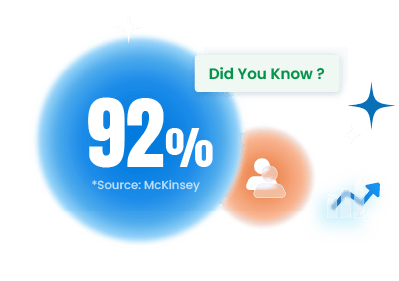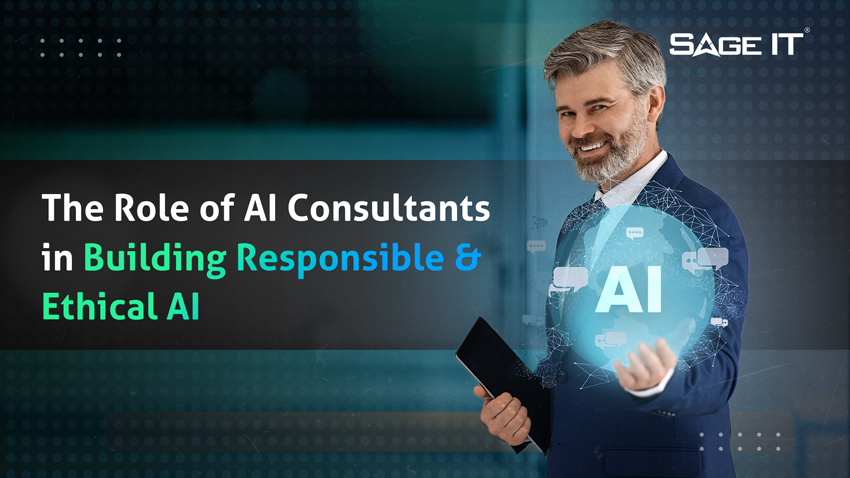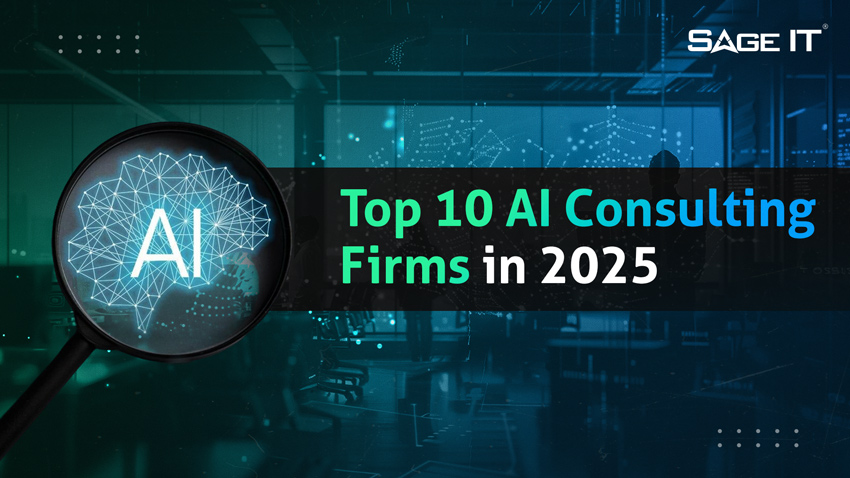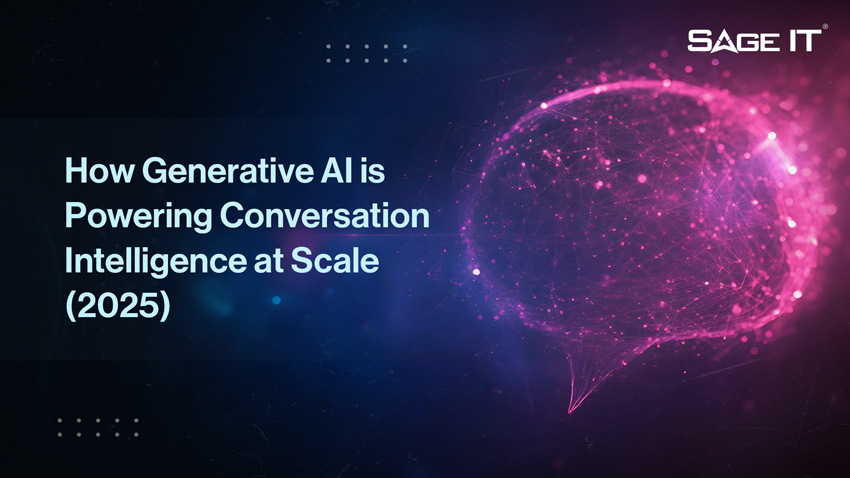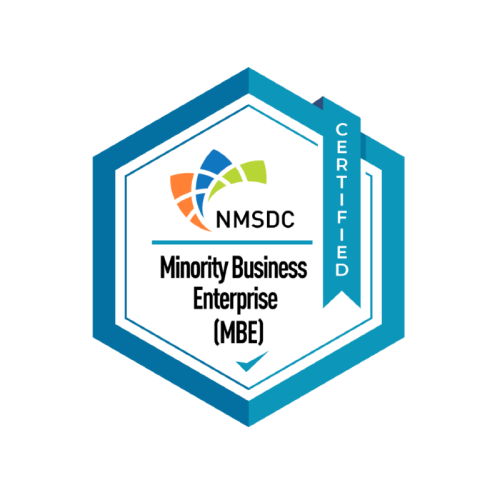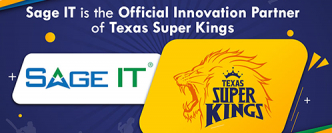In the past decade, artificial intelligence (AI) has rapidly evolved from narrow, task-specific tools to increasingly generalized systems capable of understanding, generating, and interacting with language, visuals, and structured data.
At the heart of this transformation lies a breakthrough class of AI architectures: foundation models.
These models, including OpenAI’s GPT-4, Meta’s LLaMA, Google’s Gemini, and Stability AI’s Stable Diffusion, have become the backbone of modern AI. They’re called “foundation” models because they act as versatile, general-purpose platforms that can be fine-tuned or prompted to perform a vast range of tasks across industries.
From content generation and conversational agents to medical diagnostics and autonomous systems, their adaptability has made them essential infrastructure for the next generation of intelligent applications.
The Post-ChatGPT Surge: A New AI Paradigm
The launch of ChatGPT in late 2022 acted as a tipping point, propelling foundation models into mainstream adoption.
In just a few months:
- Millions of users, from Fortune 500 leaders to solo developers, began leveraging large language models (LLMs)
- Enterprises began using LLMs to streamline operations, accelerate prototyping, and automate cognitive workflows
This wasn’t just a technological milestone. It marked a shift in how:
- Software is designed and built
- Products are delivered to market
- AI integrates directly into strategic business models
Who Should Read This Guide?
Whether you’re a:
Startup founder looking to accelerate product development with limited resources
- Enterprise executive seeking scalable AI architecture that reduces time-to-value
- Data science leader exploring model selection and customization strategies
- Developer or engineer needing practical insights on implementation and tooling
This guide is crafted to provide clarity, depth, and strategic insight on foundation models tailored to your perspective.
What You’ll Learn in This Guide
Whether you’re a:
This is not another surface-level overview. We’ll dive into:
- The core architecture and training principles of foundation models
- Comparative insights: Foundation models vs traditional ML
- Benefits and risks for startups, scaleups, and large enterprises
- Real-world use cases by industry, from healthcare to legal tech
- Cost and infrastructure considerations for implementation
- The ethics and governance landscape shaping responsible AI
- A breakdown of leading models and platforms, both open-source and proprietary
- Strategic guidance on fine-tuning, integration, and maximizing ROI
By the End of This Guide…
You’ll walk away with:
- A deep understanding of what foundation models are
- A framework to evaluate, select, and deploy them effectively
- And the ability to align this powerful AI infrastructure with your business goals
What Are Foundation Models? Definition, Origins, and Evolution
In the past decade, artificial intelligence (AI) has rapidly evolved from narrow, task-specific tools to increasingly generalized systems capable of understanding, generating, and interacting with language, visuals, and structured data.
At the heart of this transformation lies a breakthrough class of AI architectures: foundation models.
These models, including OpenAI’s GPT-4, Meta’s LLaMA, Google’s Gemini, and Stability AI’s Stable Diffusion, have become the backbone of modern AI. They’re called “foundation” models because they act as versatile, general-purpose platforms that can be fine-tuned or prompted to perform a vast range of tasks across industries.
From content generation and conversational agents to medical diagnostics and autonomous systems, their adaptability has made them essential infrastructure for the next generation of intelligent applications.
How Are Foundation Models Trained?
Foundation models rely on self-supervised learning, where the model learns to understand structure and meaning in data without requiring explicit labels. This is made possible by massive computational infrastructure and breakthrough architectures like the Transformer, which introduced attention mechanisms to more effectively process long sequences of data.
A typical training process includes:
- Pretraining: Learning general patterns from billions of text/image/audio tokens
- Fine-tuning: Specializing the model with smaller, domain-specific datasets
- Prompt Engineering or Retrieval Augmentation: Making the model task-aware without retraining
This process results in a model that can generate, classify, translate, summarize, or infer, all from a single architecture.
From Narrow AI to Generalized Intelligence
Prior to foundation models, AI development was siloed: a fraud detection model couldn’t be used for sentiment analysis; a facial recognition model couldn’t summarize medical reports. Each task required its own bespoke pipeline, dataset, and architecture.
Foundation models changed that paradigm. By learning broad knowledge representations, they can be:
- Repurposed for new tasks with few-shot or zero-shot learning
- Integrated into multimodal workflows (e.g., combining text + image + voice)
- Embedded into products as APIs or platform services (e.g., OpenAI’s GPT API, Amazon Bedrock, Google Vertex AI)
These capabilities mark a shift from narrow AI to systems that resemble general-purpose cognitive engines, opening the door to Artificial General Intelligence (AGI) in the long term.
Why This Matters for Startups and Enterprises
For startups, foundation models remove the cost and complexity barrier to entering the AI space. Teams can now build sophisticated AI applications without training models from scratch.
For enterprises, they offer scalability, faster deployment, and extensibility across business units. A single foundation model can serve product teams, customer service, R&D, and compliance with customizations for each.
According to Forrester’s 2024 Wave™ report, as cited by Google Cloud, developers can fine-tune foundation models with just 1% of the original training data.
Key Characteristics of Foundation Models
Foundation models aren’t just larger versions of traditional AI, they are fundamentally different in how they learn, adapt, and scale. Below are the core characteristics that set them apart and make them uniquely powerful for modern AI applications.
1. Transferability and Generalization
Foundation models are general-purpose by design. They are pretrained on massive, diverse datasets and can transfer knowledge across domains with minimal additional training. This means:
- A language model trained on books and web text can be fine-tuned for legal document review.
- A vision-language model trained on internet images can be adapted to diagnose X-rays or satellite imagery.
They generalize far better than traditional models, which require strict alignment between training and deployment environments.
2. Multimodal Learning Capabilities
Many foundation models are multimodal, capable of processing and generating text, images, video, and audio within a single architecture. Examples:
- CLIP links text to images.
- Sora from OpenAI can generate video from text prompts.
- GPT-4 now supports both visual and textual input/output.
This enables seamless cross-modal applications: think of a customer service assistant that can read a product manual, generate a video demo, and respond to user queries, all from one foundation model backbone.
3. Scalability Across Tasks and Data Sizes
Thanks to architectures like the Transformer and innovations in distributed training, foundation models scale horizontally and vertically:
- Horizontal scalability means the same model can serve multiple applications (e.g., summarization, translation, code generation).
- Vertical scalability enables deeper performance when more data or compute is added, resulting in emergent abilities like reasoning or coding.
This scalability makes foundation models ideal for platformization, one model, many services.
4. Emergent Abilities and Compositional Reasoning
Larger foundation models exhibit emergent capabilities, abilities that were not explicitly trained but arise due to scale:
- Multi-step logical reasoning
- Code synthesis
- Mathematical problem-solving
- Domain adaptation with minimal data
This is especially useful for enterprises seeking to deploy AI in dynamic, high-context environments (e.g., legal, financial, healthcare).
5. Self-Supervised and Continual Learning
Unlike traditional supervised learning that depends on labeled data, foundation models are trained using self-supervised learning:
- They learn by predicting missing data, next tokens, masked regions, etc.
- They can be continually updated with new data without forgetting past knowledge, also known as continual learning.
This makes them cheaper to scale and more resilient to domain drift, a critical advantage for production environments.
6. Fine-Tuning and Prompt Engineering Support
Once pretrained, foundation models are highly customizable through:
- Fine-tuning on specific datasets (e.g., radiology reports, legal contracts)
- Prompt engineering to nudge behavior without retraining
- Adapters and LoRA layers for parameter-efficient customization
These techniques make them ideal for low-resource environments like startups or teams without deep ML ops experience.
7. Versatility Across Domains and Industries
Whether you’re in marketing, logistics, pharma, or law, foundation models provide a flexible base for domain-specific applications. The same architecture can:
- Draft emails and contracts
- Summarize legal rulings
- Diagnose diseases
- Generate marketing visuals
- Build code and debug it
This domain-agnostic versatility is a key reason they’re seen as the “operating system of AI.
Examples of Popular Foundation Models
Foundation models have rapidly evolved from research prototypes to commercial engines powering next-gen AI. Below are the most influential models across different modalities and their enterprise-grade applications.
1. GPT Series (OpenAI)
Type: Text + (Multimodal with GPT-4)
- Capabilities: Natural language generation, reasoning, code synthesis, summarization, translation.
- Use Cases: Chatbots (ChatGPT), knowledge assistants, customer support automation, document summarization.
Why it matters: GPT has become the de facto benchmark for text-based AI. Enterprises embed it in CRM tools, legal contract analysis, and marketing automation platforms.
2. Claude (Anthropic)
- Type: Text
- Focus: Helpful, honest, and harmless AI aligned with human intent.
- Strengths: Long-context understanding (up to 200K tokens), ethical alignment.
Enterprise impact: Ideal for legal, financial, and compliance-heavy sectors requiring nuanced reasoning and ethical safety rails.
3. LLaMA (Meta AI)
Type: Text
- Strength: Open-source family of models (LLaMA 3.1 being the latest)
- Popular With: Research institutions, AI startups, and developers building customizable models in private environments.
Why it matters: Gives fine-grained control over deployment, governance, and tuning, critical for data-sensitive industries.
4. DALL·E (OpenAI)
Type: Text-to-Image
- Strength: Creates realistic, high-quality images from natural language descriptions.
- Enterprise Use: Visual content generation for e-commerce, ad creatives, game assets, and design mockups.
Bonus: DALL·E 3 is embedded directly into ChatGPT for seamless visual storytelling.
5. Stable Diffusion (Stability AI)
Type: Text-to-Image (Open-source)
- Advantages: Highly customizable, fine-tunable, and ideal for on-prem deployments.
- Used By: Creative teams, design tools, marketing agencies, and startups looking to embed generative image capabilities into apps.
Key benefit: Freedom from API costs and full control over training data.
6. Sora (OpenAI)
- Type: Text-to-Video (Next-gen)
- Current Status: In early access/research preview
- Potential: Creates short video clips from textual prompts. A game-changer for media, education, and simulation environments.
What to watch: This is the next frontier in multimodal generative content.
7. Mistral, Gemma, DeepSeek, and Others
Mistral: Open-weight, efficient LLMs optimized for production use.
- Gemma (Google DeepMind): Lightweight, developer-friendly LLMs for edge and cloud.
- DeepSeek: High-performing multilingual models focused on search, research, and code generation.
These models highlight the rise of open ecosystem players offering strong performance without closed-source constraints.
8. Vision + Multimodal Models
- CLIP (OpenAI): Links images to text; useful for semantic search, visual QA, and tagging.
- CoCa (Contrastive Captioners): Powerful for image captioning and generation.
- Flamingo (DeepMind): Handles video + text for dynamic understanding in real time.
These are leading the AI for perception, redefining human-computer interaction.
Platform Comparison Table
| Model | Modality | Open Source | Fine-Tuning | Deployment Options |
| GPT-4 | Text / Vision | No | Via API | Cloud only |
| Claude | Text | No | Via API | Cloud only |
| LLaMA | Text | Yes | Yes | Cloud / On-prem |
| DALL·E | Image Gen | No | Limited | API |
| Stable Diffusion | Image Gen | Yes | Yes | Local / Cloud |
| CLIP | Vision + Text | Yes | Yes | Local / Hybrid |
Foundation Models vs Traditional ML Models
As the foundation model paradigm reshapes the AI landscape, it’s essential to understand how it differs from the traditional machine learning (ML) approaches that dominated the past two decades. The evolution isn’t just about model size, it’s about generalization, flexibility, and scalability.
1. Architecture and Design Philosophy
| Aspect | Traditional ML Models | Foundation Models |
| Design Intent | Task-specific | General-purpose |
| Model Types | Decision trees, SVMs, small neural nets | Transformers with billions of parameters |
| Modality | Unimodal (e.g., text or image) | Often multimodal (text, vision, audio, etc.) |
Key Takeaway: Traditional models are narrowly trained to solve isolated problems. Foundation models are built to be flexible, adapting across tasks with minimal changes.
2. Data Requirements and Training
| Element | Traditional ML Models | Foundation Models |
| Data Dependency | Requires labeled, curated data | Trained on vast, unlabeled datasets |
| Scale of Data | Megabytes to gigabytes | Terabytes to petabytes |
| Learning Approach | Supervised/unsupervised | Self-supervised + transfer learning |
Why It Matters: Foundation models learn representations at scale, enabling faster deployment and reduced need for task-specific data engineering.
3. Transferability and Fine-tuning
| Dimension | Traditional ML Models | Foundation Models |
| Reusability | Low, retraining often required | High, can be fine-tuned across domains |
| Transfer Learning | Limited | Native capability |
| Few-shot/Limited Data | Poor performance | High accuracy with minimal samples |
Why It Matters: Foundation models learn representations at scale, enabling faster deployment and reduced need for task-specific data engineering.
4. Performance and Capabilities
| Capability | Traditional ML Models | Foundation Models |
| Generalization | Narrow, specific problem domains | Broad, adaptable to new tasks |
| Reasoning & Creativity | Very limited | Strong (e.g., story generation, code writing) |
| Multilingual/Multi-domain | Requires separate models | Often built-in |
Enterprise Benefit: One well-trained foundation model can replace dozens of traditional models, slashing operational complexity.
5. Limitations and Trade-offs
| Concern | Traditional ML Models | Foundation Models |
| Interpretability | High (e.g., decision trees) | Low (“black box”) |
| Compute Requirements | Moderate | Extremely high (training + inference) |
| Cost | Lower to moderate | High upfront cost, lower marginal cost |
Caution: While foundation models are powerful, they demand significant compute, infrastructure, and risk oversight, especially around ethical use and hallucination.
6. The Strategic Shift
| Traditional ML Models | Foundation Models |
| Designed for precision and specificity | Designed for adaptability and scale |
| Require significant manual feature engineering | Learn representations automatically |
| Struggle with novel or low-data scenarios | Excel in generalization and few-shot tasks |
Foundation models offer a platform-level leap in capability. For startups and enterprises alike, this is the evolution from building tools to building intelligent systems that learn, adapt, and scale with minimal friction.
Startup Benefits of Foundation Models
Foundation models are often associated with Big Tech, massive compute, billions of parameters, and petabytes of data. But here’s the reality: startups stand to gain disproportionately more from this paradigm shift.
When implemented strategically, foundation models can level the playing field, allowing lean teams to deliver enterprise-grade AI solutions, disrupt legacy incumbents, and unlock new product categories with agility.
1. Faster Time-to-Market
Foundation models come pre-trained on diverse data and tasks. This drastically reduces the time needed to build an MVP or new feature.
- Before: 6–9 months to train and deploy a traditional model.
- Now: 2–3 weeks to fine-tune a foundation model or prompt-engineer for your use case.
Example: A healthtech startup can build a clinical triage chatbot in weeks using a fine-tuned LLM, rather than hiring a team of NLP experts to train from scratch.
2. Reduced Talent and R&D Overhead
Building custom ML pipelines, labeling datasets, and managing model operations requires specialized skills and deep pockets.
Foundation models remove much of that friction:
- No need to label thousands of examples.
- No need to build your own model architecture.
- Fine-tuning and deployment can often be done with off-the-shelf tools.
Why it matters: Startups with 1–2 data scientists can now do what used to require an entire research team.
3. Access to Enterprise-Grade AI Capabilities
Foundation models encode massive general intelligence across language, vision, code, and more, capabilities that startups would otherwise not have the resources to build.
Startups can now:
- Translate across 50+ languages.
- Generate fluent copy for marketing, UX, or product onboarding.
- Process contracts, medical reports, or legal documents at scale.
- Build intelligent agents for support, operations, and sales.
Key takeaway: Foundation models democratize advanced AI, putting world-class capabilities in the hands of every founder and engineer.
4. Rapid Experimentation and Iteration
With traditional ML, launching a new model means weeks of data prep, modeling, training, and evaluation. With foundation models, you can:
- Test new features via prompt engineering in real-time.
- Validate hypotheses using small-scale fine-tuning.
- Prototype across modalities (text, vision, code) using the same base model.
Impact: This unlocks speed as a moat, you can out-learn and out-ship competitors simply by iterating faster.
5. Modularity and Reusability
Foundation models can power multiple applications from a single base model:
- Use the same LLM for summarizing meeting notes, auto-generating emails, and extracting insights from CRM.
- Leverage a vision model to support both facial recognition and product defect detection.
This reduces model sprawl and simplifies infrastructure.
6. Lower Marginal Costs at Scale
While training a foundation model is expensive, fine-tuning and inference are cost-efficient, especially when amortized across many use cases or customers.
Combined with cloud-native offerings (e.g., AWS Bedrock, Azure OpenAI, Hugging Face), startups can scale without huge upfront investments.
7. Built-in Transfer Learning
Foundation models already “know” a lot about language, the web, images, code, so you don’t need to teach them everything from scratch. Even with niche domains (e.g., biotech, legal), a little fine-tuning goes a long way.
Startup advantage: Use domain-specific data sparingly, and still outperform task-specific traditional models.
8. Plug-and-Play Ecosystem Support
From open-source base models (Mistral, LLaMA, Falcon) to hosted platforms (Anthropic Claude, OpenAI, Cohere), startups have more choices than ever.
- No infra? Use APIs.
- Want control? Self-host open-source models.
- Need compliance? Use region-specific providers.
Optionality = leverage.
Final Thought
For startups, foundation models are more than a tech upgrade, they are a strategic unlock. They let small teams:
- Compete with giants,
- Move at breakneck speed,
- Build smarter, faster, cheaper AI products than ever before.
The question is no longer if startups should use the foundation models, but how soon and how aggressively.
Use Cases of Foundation Models
Foundation models aren’t just theoretical marvels, they’re actively transforming real-world applications across industries and functions. Their versatility across modalities (text, vision, code, audio) and tasks (classification, generation, summarization, reasoning) makes them an unprecedented tool for startups and enterprises alike.
This section showcases high-impact use cases, categorized by function and sector, to help you identify where foundation models can deliver immediate value.
Natural Language Understanding (NLU) and Generation
Foundation models have revolutionized NLP by eliminating the need for task-specific architectures. Some leading applications include:
- Conversational AI & Chatbots: Multilingual support, context retention, emotion detection (e.g., OpenAI’s GPT, Anthropic Claude).
- Text Summarization: Automatic summarization of legal, medical, or technical documents.
- Sentiment Analysis: Real-time analysis of customer feedback, product reviews, or financial news.
- Language Translation: Domain-aware, high-fidelity translations without human post-editing.
Used in: Customer support, HR tech, fintech, healthcare platforms, enterprise knowledge management.
Computer Vision
With multimodal foundation models, vision tasks have become more accurate, flexible, and integratable.
- Object Detection & Image Classification: Pretrained vision transformers (e.g., SAM, ViT) outperform legacy CNNs in low-data settings.
- Facial Recognition & Emotion Detection: Used in security, HR tech, and healthcare diagnostics.
- Visual Search & Product Tagging: Ecommerce and retail use models to auto-tag SKUs or surface similar items.
- Document Parsing (OCR++): Extract structured data from invoices, contracts, and IDs with vision-language models (e.g., Donut, LayoutLMv3).
Used in: Retail, insurance, logistics, identity verification, manufacturing, healthcare.
Generative AI (Text, Image, Code, Audio, Video)
Foundation models power generative AI capabilities across creative and technical fields:
- Content Creation: Blogs, SEO pages, social media creatives, ad copy.
- Image Generation: Realistic visuals for ads, games, or mockups (e.g., DALL·E, Midjourney, Stable Diffusion).
- Code Generation & Review: Tools like GitHub Copilot accelerate development by suggesting code and detecting bugs.
- Music and Video Generation: Used in entertainment, marketing, and creator tools.
Used in: Media, entertainment, marketing, game dev, SaaS, design tools, edtech.
Healthcare and Life Sciences
While data sensitivity is a barrier, foundation models are reshaping clinical workflows:
- Radiology Image Interpretation: Vision models analyze CT, X-ray, and MRI scans.
- Clinical NLP: Extracting structured information from unstructured EHR notes.
- Patient Triage Bots: LLMs handle patient intake, FAQs, symptom triage.
- Drug Discovery: Protein structure modeling, compound generation (e.g., AlphaFold, ESM).
Used in: Hospitals, diagnostics labs, digital health startups, pharma R&D.
Legal, Finance, and Enterprise Knowledge Work
Knowledge-intensive tasks now benefit from semantic reasoning and text generation:
- Contract Analysis: Flagging risk clauses, summarizing terms, comparing documents.
- Financial Analysis: Generating earnings summaries, parsing SEC filings, forecasting trends.
- Regulatory Compliance: Automating report generation or monitoring policy updates.
- Knowledge Base Q&A: Natural language access to internal docs and SOPs.
Used in: Legal tech, fintech, RegTech, enterprise SaaS, consulting.
Agent-based Automation and Decision Support
Combining foundation models with structured data, APIs, and tools enables semi-autonomous systems:
- AI Agents: Tools like Auto-GPT or ReAct-based agents perform research, draft responses, run tasks.
- RPA + LLMs: Automate workflows that require document understanding or reasoning.
- Decision Intelligence: Augment analyst workflows with real-time summaries and recommendations.
Used in: Enterprise IT, operations, HR, sales enablement, procurement.
Data Science and Analytics
Foundation models are redefining how analysts explore, interpret, and act on data:
- Code Co-Pilots: Auto-suggest SQL, Python, or R code from natural language queries.
- Narrative Generation: Turn dashboards into executive-ready insights.
- Multimodal Analytics: Combine images, charts, and tables in data storytelling.
Used in: BI platforms, analytics SaaS, data engineering tools.
Developer Enablement
Code-focused foundation models (e.g., CodeLlama, DeepSeekCoder) accelerate developer productivity:
- Code Completion: Context-aware generation of functions, snippets, or entire modules.
- Bug Detection & Fixing: LLMs help detect logic bugs or suggest fixes.
- Documentation Generation: Auto-generate API docs, user guides, and internal wikis.
- Learning Tools: Natural language explanations of code for onboarding or upskilling.
Used in: DevOps, SaaS tools, edtech, internal tools.
Key Takeaway
Foundation models are not one-trick tools. Their generality unlocks:
- Cross-functional use: One model powers ops, marketing, sales, and R&D.
- Multimodal tasks: Combine vision, text, and code in unified workflows.
- Continual improvement: Models can evolve as more use cases emerge.
Data Requirements and Pre-Training Considerations
Foundation models are only as powerful as the data they’re trained on. Unlike traditional machine learning models that rely on narrow, labeled datasets, foundation models thrive on diverse, large-scale, often unlabeled data. For startups and enterprises aiming to build or fine-tune these models, understanding data sourcing, preparation, and governance is crucial.
This section breaks down what kind of data foundation models need, how pretraining works, and what to consider before getting started.
What Data Do Foundation Models Need?
Foundation models typically require massive volumes of diverse, high-quality data across modalities. Common sources include:
Text Data
- Web crawls (e.g., Common Crawl)
- Wikipedia, academic papers, books
- Social media, forums, blogs
- Corporate documents, chat logs, support tickets (enterprise use cases)
Image & Video Data
Public image datasets (e.g., ImageNet, LAION)
- Labeled and unlabeled photos, videos
- Screenshots, UI designs, medical imaging, surveillance feeds
Audio & Speech Data
Podcasts, YouTube audio, audiobooks
- Call center recordings, voice assistants
- Music and ambient recordings
Code Repositories
- GitHub repos, StackOverflow, internal codebases
- Multi-language datasets, paired documentation
Structured & Semi-structured Data
Tables, charts, spreadsheets
- PDFs, invoices, scanned documents
- Log files and JSON/XML outputs (especially for multimodal apps)
Pretraining Basics
Pretraining is the phase where the model learns patterns, structures, and representations from raw data, without human supervision. Key concepts:
- Self-Supervised Learning: The model learns by solving “pretext tasks” (e.g., predicting missing words, next tokens, masked patches in images).
- Tokenization: Data (especially text) is converted into tokens; multimodal tokenizers unify data from different formats.
- Transformer Architecture: Most models (GPT, BERT, SAM, etc.) use this backbone for efficient parallel training.
- Scale = Power: Accuracy improves with more parameters and more data, hence the “bigger is better” trend (but not always optimal for startups, see below).
Foundation Model Scale Guidelines
| Model Type | Typical Data Size | Parameters | Training Time (est.) |
| Small LLM | ~10–50 GB | 100M–1B | Hours–days (on 1–4 GPUs) |
| Medium LLM | ~100–500 GB | 1–10B | Days–weeks (on GPU clusters) |
| Large/Frontier LLM | 1–10+ TB | 50–180B+ | Weeks–months (on superclusters) |
Pretraining: Cloud, Infra, and Tooling
Training from scratch? You’ll need:
- Compute: NVIDIA A100s, H100s, TPU v5e (or fine-tune on lower-end GPUs)
- Frameworks: PyTorch, HuggingFace Transformers, DeepSpeed, FSDP, JAX
- Data Pipelines: Apache Beam, Petastorm, WebDataset, Ray
- Storage: High-bandwidth object stores (e.g., S3, GCS), SSD-backed file systems
Startups may opt for foundation model fine-tuning or adapter-based training (LoRA, QLoRA, PEFT) to save time and cost.
Data Quality Considerations
Garbage in, garbage out. Be mindful of:
- Bias in source data → Leads to harmful or exclusionary outputs
- Data duplication → Inflated training signals, degraded performance
- Hallucination-prone content → Fiction, satire, outdated sources
- Legal and ethical issues → Scraping copyrighted or sensitive data
Best practices:
- Filter toxic/offensive content
- Maintain geographic, linguistic, and demographic balance
- Use deduplication tools (e.g., MinHash, Cleanlab)
- Ensure consent and licensing for training corpora
Enterprise-Specific Considerations
- Data Silos: Foundation models need unified access across internal systems.
- Security: Sensitive data must be masked or de-identified.
- Governance: Track lineage, compliance (e.g., HIPAA, GDPR), and data usage.
- Synthetic Data: Useful for augmentation when real data is scarce or regulated.
Key Takeaway
Successful pretraining doesn’t start with models, it starts with good data strategy. Whether you’re building from scratch or customizing a base model, the right data mix and processing approach will determine:
- Model versatility
- Output safety
- Domain relevance
- Long-term ROI
Fine-Tuning and Customization for Specific Tasks
Foundation models come pretrained with immense general knowledge, but to make them truly useful in real-world business scenarios, fine-tuning is essential. Whether it’s customizing a large language model (LLM) for legal document review or adapting a vision model for radiology scans, fine-tuning helps bridge the gap between broad capability and niche value.
For startups and mid-sized enterprises, this is where strategic differentiation happens. You don’t have to build the model from scratch, you build on top of the foundation.
Types of Customization Techniques
Let’s break down the key ways to customize foundation models:
1. Full Fine-Tuning
Adjusts all model parameters using your domain-specific dataset.
- Offers maximum accuracy but is computationally expensive.
- Best suited for well-funded startups or enterprise use cases with large, labeled datasets.
2. Parameter-Efficient Fine-Tuning (PEFT)
Techniques like LoRA, QLoRA, Prefix Tuning, and Adapters modify only a subset of model parameters.
- Much lower cost, faster to train, with minimal performance trade-off.
- Perfect for startups needing rapid experimentation on smaller budgets.
3. Prompt Engineering and Few-Shot Learning
- No model retraining required.
- Uses cleverly designed inputs to steer the model toward desired outputs.
- Ideal for lightweight tasks, early prototyping, or marketing/customer service bots.
4. Retrieval-Augmented Generation (RAG)
- Combines a foundation model with a custom knowledge base.
- Retrieves relevant context before generating output.
- Excellent for domains like legal, healthcare, support, or SaaS help docs.
When Should a Startup Fine-Tune?
You’re dealing with regulated content (e.g., medical, legal, financial) that needs guaranteed accuracy.
- Your model must speak in a specific tone, domain language, or company voice.
- You want to embed private, proprietary knowledge without exposing it via API to a third party.
- You need predictable and auditable outputs for customer-facing use cases.
Real-World Examples
- LegalTech startup fine-tunes a LLaMA model to parse contracts, flag risky clauses, and auto-suggest alternatives.
- E-commerce firm customizes a vision-language model to tag and sort user-generated fashion content.
- Healthcare platform uses QLoRA to personalize an LLM for patient query understanding, with full HIPAA compliance.
Combine Open-Source Models + PEFT for Cost Efficiency
Startups can gain serious agility by:
- Choosing open-source models like LLaMA, Mistral, or Falcon.
- Applying QLoRA or LoRA to fine-tune on modest GPU setups.
- Using open platforms like Hugging Face, Colab, or Paperspace to manage infra costs.
Strategic Edge
Fine-tuning isn’t just a technical process, it’s a business enabler. When executed well, it allows AI startups to:
- Accelerate time-to-market
- Offer tailored solutions that outperform generic models
- Safeguard intellectual property and customer trust
Cost and Infrastructure Considerations
Foundation models offer extraordinary capabilities, but those capabilities come with significant infrastructure costs if not managed wisely. For startups and innovation teams, understanding the true cost-to-value ratio is non-negotiable. A misstep here can blow your budget or delay product readiness.
This section breaks down key cost drivers, infrastructure options, and how startups can build smart, scalable AI pipelines, without burning capital.
Key Cost Drivers in Foundation Model Adoption
1. Model Size and Complexity
- Bigger models (like GPT-4, Claude 3, or Gemini Ultra) cost more to run, even if you don’t fine-tune them.
- Training or fine-tuning models with billions of parameters requires GPUs like A100s or H100s, which can cost $20–30/hour on-demand.
2. Training vs Inference
| Stage | What It Is | Cost Characteristics |
| Training | Pretraining or fine-tuning a model | High upfront compute costs, longer timelines |
| Inference | Running the model to generate output | Ongoing operational cost (per API call or GPU hour) |
3. Infrastructure Choices
- Cloud (AWS, GCP, Azure): Easy scalability, but costs can spike fast.
- Managed APIs (OpenAI, Anthropic): Zero infra burden, but limited control, and privacy concerns.
- On-prem / Bare metal: Cost-effective for stable workloads at scale, but high setup complexity.
Infrastructure Deployment Models for Startups
| Model | Best For | Notes |
| API-first (OpenAI, Claude, Gemini) | MVPs, early-stage teams | Fastest time to value. No infra overhead. Pay per usage. |
| Open-source + Cloud GPUs (Hugging Face, Replicate, RunPod) | Mid-stage teams with growing needs | Flexibility + control. Ideal for PEFT and experimentation. |
| Hybrid (API + Custom Inference) | Data-sensitive workloads | Offload general tasks to APIs, use private infra for sensitive data. |
| On-premise / Dedicated GPU Cluster | Large-scale enterprise, regulated sectors | Economical at scale, but complex to manage and secure. |
Cost-Saving Tips for Startups
- Use Parameter-Efficient Fine-Tuning (PEFT): LoRA, QLoRA, or Adapters reduce GPU time by up to 80%.
- Quantize your models: Use 8-bit or 4-bit precision to dramatically reduce memory and inference cost.
- Spot instances for training: Platforms like Lambda Labs, Vast.ai, or Paperspace offer affordable GPU rentals.
- Leverage open-source ecosystems: Avoid vendor lock-in. Use LLaMA, Mistral, Falcon, or TinyML variants.
- Deploy on edge (when possible): For lightweight tasks (e.g., document parsing), deploy small models on mobile or browser-based runtimes like ONNX, TensorFlow Lite, or WebAssembly.
ROI-Driven Decision Framework
| Task Importance | Model Complexity Needed | Recommendation |
| High | High | Fine-tuned open-source model on cloud GPUs |
| High | Low | Use commercial API with prompt engineering |
| Low | High | Delay deployment or use proxy models |
| Low | Low | Use prebuilt tools (Zapier, GPT integrations) |
This keeps infrastructure aligned with business value, not just model hype.
Hidden Costs to Watch For
- Latency and bandwidth: Multimodal and RAG systems may choke on limited internet or mobile settings.
- Vendor lock-in: Some API platforms restrict model export or obscure training data usage.
- Compliance and audit readiness: Hosting AI models without SOC2/HIPAA-ready infra can derail deals in healthcare, finance, or government.
Final Word
Choosing the right infra isn’t just a DevOps decision, it’s a strategic lever. The most successful startups build AI systems that:
- Scale cost-efficiently
- Retain flexibility for iteration
- Avoid unnecessary overengineering
The goal is performance without bloat, and innovation without regret.
Ethical and Responsible AI Considerations
In the era of foundation models, where AI systems generate content, influence decisions, and interact with end users at scale, ethical design isn’t a “nice to have”, it’s a strategic necessity.
Startups that fail to embed ethics and responsibility into their AI systems face not just reputational damage but regulatory scrutiny, customer distrust, and long-term technical debt. The good news? Responsible AI doesn’t slow innovation, it amplifies trust, accelerates adoption, and opens enterprise doors.
What Does Responsible AI Mean for Foundation Models?
Responsible AI isn’t one thing, it’s a stack of considerations woven into product, data, and model choices:
| Pillar | What It Means | Startup Implication |
| Fairness | Preventing bias and discrimination in AI decisions | Ensure model outputs don’t marginalize users by gender, race, age, etc. |
| Transparency | Making it clear how and why an AI makes decisions | Use model cards, prompt logs, explainability tools (e.g., SHAP, LIME) |
| Privacy | Protecting sensitive user data throughout AI lifecycle | Follow data minimization; avoid leaking PII during fine-tuning |
| Accountability | Ensuring someone is answerable for AI outcomes | Assign model risk ownership internally |
| Safety | Avoiding harmful, misleading, or dangerous content | Implement output filters, adversarial testing, guardrails |
Key Ethical Challenges with Foundation Models
1. Bias Amplification
Foundation models are trained on internet-scale data, and inherit social, cultural, and systemic biases.
🧪 Example: LLMs might underrepresented minority voices or misgender individuals in text generation.
✅ Startup Tip: Choose diverse fine-tuning datasets. Test outputs across demographics. Use tools like
2. Hallucinations and Misinformation
LLMs are confident, even when they’re wrong. This can lead to hallucinations: plausible but false outputs.
🔥 Risk: A healthcare startup using a foundation model could generate inaccurate medical recommendations.
✅ Startup Tip: Implement RAG (retrieval-augmented generation) where possible. Add disclaimers or verification steps in UX.
3. Data Privacy and Consent
Did your training or fine-tuning data contain personally identifiable information (PII)? If yes, you risk privacy violations or legal exposure.
✅ Startup Tip: Anonymize data, restrict logs, and use open datasets with clear licenses. Tools like PynamoDB, Presidio, or OpenMined help with privacy-aware data handling.
4. Deepfakes and Harmful Generative Output
Multimodal models (text-to-image/video) can generate synthetic content, both useful and dangerous.
Concern: Deepfakes, non-consensual imagery, misinformation videos, etc.
Startup Tip: Use safety classifiers, watermarks, or gated access. OpenAI and Stability offer moderation APIs to flag harmful generations.
Startup Playbook for Responsible AI
1. Build with “Ethics by Design”
- Define ethical principles during roadmap planning.
- Involve non-technical stakeholders early (e.g., policy, legal, design).
2. Implement Internal Review Boards
- Establish lightweight AI Review Councils to vet high-risk use cases.
- Use templates to evaluate risks (fairness, explainability, privacy, misuse potential).
3. Adopt Open Governance Frameworks
Consider aligning with industry standards:
- NIST AI Risk Management Framework
- OECD AI Principles
- EU AI Act readiness
Follow initiatives like Partnership on AI or Mozilla’s Trustworthy AI guide.
4. Prioritize Human-in-the-Loop (HITL)
- For safety-critical tasks (e.g., legal, healthcare, finance), ensure humans verify outputs before decisions are made.
5. Document Everything
- Publish Model Cards, Datasheets for Datasets, and Decision Logs, even internally.
- Transparency builds trust, especially for enterprise buyers.
Building Trust at the Speed of Innovation
Startups have a unique opportunity: embed trust as a core product feature, not a retroactive patch. The winners in the foundation model era will be those who scale fast without cutting corners on responsibility.
“Move fast, but build responsibly.”
Open-source vs Proprietary Foundation Models
For startups, selecting between open-source and proprietary foundation models isn’t just a technical preference, it’s a strategic inflection point. The right choice affects:
- Speed to market
- Cost of experimentation
- Scalability
- Regulatory compliance
- Investor confidence
Understanding the trade-offs helps you align model capabilities with business realities, especially when you’re navigating constraints around budget, talent, and time.
Core Differences at a Glance
| Criteria | Open-source Models (e.g., LLaMA, Mistral, Falcon) | Proprietary Models (e.g., GPT-4, Claude, Gemini) |
| Access | Download and host locally | API access via vendor |
| Transparency | Full access to weights, architecture | Black-box models |
| Cost | Free or low-cost (except infra) | Usage-based pricing (can scale quickly) |
| Customization | High, retrain, finetune, modify | Limited, fine-tuning may not be offered |
| Speed to deploy | Slower (infra, fine-tuning, eval) | Fast, plug-and-play via API |
| Risk & liability | You’re accountable for safety | Some guardrails handled by vendor |
| Compliance control | Easier for on-prem use cases | Limited control over data handling/storage |
| Innovation speed | Great for cutting-edge tinkering | Ideal for production-grade readiness |
When Should Startups Choose Open-Source?
Choose open-source foundation models if:
- You need full control over how your model behaves (e.g., regulated industries, offline/air-gapped deployments).
- You have ML talent in-house capable of fine-tuning and evaluating model safety.
- You’re creating a novel user experience, where black-box APIs won’t suffice.
- You’re building AI infrastructure or platforms (e.g., building an in-house RAG stack).
- You want to avoid vendor lock-in and scale cost-efficiently at large volumes.
🔧 Example: A legal AI startup needing on-prem, audit-ready deployment uses LLaMA-3 and tunes it on legal contracts.
When Should Startups Choose Proprietary Models?
Choose proprietary foundation models if:
- You need to launch fast, test concepts, and iterate without deep infra setup.
- You prioritize quality outputs, reliability, and latency over cost control.
- You lack an in-house team to train and maintain models.
- You’re focused on user-facing apps where UX, not model training, is the differentiator.
- You’re in early traction mode, needing to prove value before investing in infra.
⚡ Example: A consumer startup building an AI tutor uses GPT-4 via API to ship in weeks, not months.
Hybrid Approaches Are Emerging
Some of the most competitive startups are blending both approaches:
- Prototype with OpenAI or Anthropic
- Collect data + test value hypothesis
- Switch to open-source (e.g., Mistral 7B) for scale and IP control
- Use RAG pipelines that integrate both: open-source retrievers with proprietary LLMs as generators
🧠 Pro Tip: Evaluate newer open-source models like DeepSeek-VL, Mixtral, and Yi-34B, many outperform early proprietary releases in specific tasks.
Regulatory & IP Considerations
- Data Privacy: Open-source lets you control where data is processed, vital for healthcare, finance, or geolocation-sensitive deployments.
- Copyright/IP: Be wary of fine-tuning on proprietary datasets with open-source models, review licenses.
- Model Liability: With proprietary models, the vendor may share responsibility for moderation and compliance.
Startup Playbook: How to Decide
1. Map Your Use Case to Risk
- Is your AI output critical (e.g., legal, medical)? You’ll need transparency.
- Is it UX-focused (e.g., productivity, chat)? APIs might be fine early.
2. Assess Internal Capabilities
- Do you have ML engineers who can finetune and evaluate models?
- Can you manage infra (GPU access, cost, uptime)?
3. Run Cost vs. Speed Simulations
- Open-source may be cheaper in the long run, but slower to MVP.
- Proprietary APIs may be costlier at scale, but faster for proof-of-concept.
4. Talk to Customers
- Do enterprise prospects require explainability or on-prem deployment?
- Would you lose sales if you depend on OpenAI’s availability?
There’s no one-size-fits-all. But here’s the startup reality:
Open-source gives you ownership. Proprietary gives you velocity. Hybrid gives you optionality.
Choose not just for now, but for what you’ll need 12 months from now.
Integrating Foundation Models Into Workflows
Foundation models aren’t just powerful, they’re disruptive by design. But their value doesn’t come from standalone demos or siloed APIs. For startups and enterprises alike, the real ROI comes from seamlessly embedding these models into existing AI, data, and business workflows.
“Integration is the bridge between innovation and execution.”
If you’re not designing for integration, you’re building a brilliant black box with no real business utility.
Common Integration Use Cases
Let’s break down how startups and scale-ups are embedding foundation models into their workflows today:
| Workflow Area | How Foundation Models Fit | Tools Commonly Used |
| Data Ingestion & Cleaning | Auto-tagging, deduplication, enrichment of incoming data | LangChain, PandasAI, Trifacta |
| Document Intelligence | Summarizing, extracting entities, sentiment analysis | GPT-4, Claude, DocAI, Azure Form Recognizer |
| Customer Support | Intent detection, ticket triage, auto-reply | Zendesk + OpenAI, Forethought, Intercom Fin |
| Sales Enablement | Auto-generating proposals, insights from CRM | HubSpot GPT, Apollo + LLM, Salesforce Einstein |
| Product Analytics | Natural language querying of BI dashboards | Power BI Copilot, ThoughtSpot Sage |
| Software Dev & QA | Code generation, test case generation, log summarization | GitHub Copilot, Amazon CodeWhisperer |
| RAG Pipelines | Connecting internal knowledge bases to LLMs | LangChain, LlamaIndex, Weaviate, Pinecone |
Step-by-Step: Embedding Foundation Models into Your Workflow
1. Audit Your Current Stack
Map your AI/data infrastructure:
- Where are your current automation gaps?
- What decisions are still human-intensive?
- Where does unstructured data pile up?
Look at:
- CRM (HubSpot, Salesforce)
- Data warehouse (Snowflake, BigQuery)
- Ticketing systems (Zendesk, Freshdesk)
- Analytics (Looker, Mixpanel)
- DevOps (GitHub, Datadog, Jira)
2. Choose Model Fit Based on Workload
| Workflow Need | Best Model Fit |
| Text summarization, classification | Claude, GPT-4 Turbo, Mistral |
| Image tagging or OCR tasks | Gemini, CoHere Vision, Azure CV |
| Structured data reasoning | DeepSeek, Groq, GPT-4o |
| Enterprise-grade doc processing | Claude 3 Opus, Amazon Bedrock, Glean AI |
3. Decide: API-Based vs On-Prem
- API-Based: Easy to plug into Zapier, LangChain, or your backend with a few lines of Python. Ideal for low-volume or early-stage integration.
- On-Prem/Open-Source: Needed if you’re working with private data, air-gapped networks, or need compliance (HIPAA, SOC 2, FedRAMP).
Pro Tip: Use serverless endpoints (e.g., vLLM, TGI) for open-source model hosting.
4. Use Frameworks that Accelerate Integration
Here’s what’s dominating modern LLM stacks:
- LangChain: Orchestrates chains, agents, tools.
- LlamaIndex: Connects your proprietary data to LLMs via documents, SQL, NoSQL.
- Haystack: Ideal for RAG + search-intensive use cases.
- AutoGen: Open-source multi-agent orchestration for more autonomous workflows.
Real-World Example
Startup: SaaS analytics platform
Goal: Enable users to query dashboards via natural language
Stack:
- Backend in Python
- Dashboards in Looker
- Data in Snowflake
Integration Plan:
- Embed GPT-4 Turbo via OpenAI API to interpret user NL queries.
- Use LangChain SQLAgent to convert prompts → SQL queries.
- Send SQL to Snowflake, fetch results.
- Return answer with optional chart or dashboard link.
➡️ Time to deploy MVP: 2 weeks.
➡️ Result: 30% drop in support tickets around “how to find X in data.”
Don’t Forget Tooling & Monitoring
- Prompt Versioning: Use PromptLayer or PromptFlow
- Monitoring & Logs: Arize AI, LangSmith, Weights & Biases
- Failover Handling: Add logic for timeouts, fallback models, or error retries
- Model A/B Testing: Test Claude vs GPT vs LLaMA for different queries
Metrics That Matter
When integrating foundation models, track:
- Latency (ms)
- Token Cost per Output ($)
- Task Completion Rate (%)
- Error Rate / Hallucination Rate
- User Satisfaction (via feedback UI)
Startup Insight
“Integration is not just technical, it’s behavioral.”
Train internal teams to work with AI. Document LLM limitations. Create simple explainers for non-technical users. This speeds adoption.
Future Trends in Foundation Models
We’re standing at the inflection point of generative AI. Foundation models today are bigger, faster, cheaper, and more specialized than ever. But scale isn’t the only story. The next wave is about precision, accessibility, control, and trust, especially for startups navigating speed vs sustainability.
Let’s unpack the most critical trends shaping the future of foundation models.
1. Rise of Small Language Models (SLMs)
“Smaller, cheaper, open, yet shockingly capable.”
Not every startup needs a GPT-4-class model. Small Language Models like Phi-3, Mistral-7B, or Gemma are delivering 90% of the performance at a fraction of the cost.
Advantages:
- Lower latency and inference cost
- Fine-tunable on local hardware
- Easier to deploy at the edge or within regulated environments
Startup Insight: For task-specific applications (e.g., chatbot, summarization, FAQ), SLMs are more than enough.
2. Multimodal is Becoming the Default
Text is just one dimension. Foundation models are becoming multimodal-first.
Modern models like GPT-4o, Gemini 1.5, Claude 3 Opus, and Sora support input/output across:
- Text
- Image
- Video
- Audio
- Structured documents
- Code
Example Use Case: AI agent that understands a legal contract and a slide deck and responds in natural language.
Startup Insight: Multimodal unlocks workflow automation across departments, think product + support + legal + marketing.
3. RAG + Enterprise Knowledge Graphs
Foundation models are smart. But they’re not your SME, unless you make them one.
Retrieval-Augmented Generation (RAG) is now the dominant method for startups embedding private knowledge into LLMs.
- Connects LLMs to your data (wiki, PDFs, emails, APIs, SQL, etc.)
- Keeps model outputs grounded, verifiable, and current
Tools: LangChain, LlamaIndex, Cohere Embed, Weaviate, Pinecone
Startup Insight: RAG = your custom copilot. Whether for support, research, sales enablement, or ops automation, it’s the fastest path to ROI.
4. Open-Source Surge
The model frontier is no longer gated by OpenAI or Anthropic.
Open-source foundation models are gaining parity with closed models, while enabling:
- On-prem deployments (no data leaves your cloud)
- Full customization + retraining
- Cost control + transparency
Notable Open Models:
- LLaMA 3
- Mistral/Mixtral
- DeepSeek-VL
- Command R+ by Cohere
- Claude Haiku (via API, low cost)
Startup Insight: Expect many startups to run hybrid stacks, e.g., GPT-4o for GenAI UX + Mistral for internal data tasks.
5. Model Specialization: Vertical + Persona-Based
Foundation models are fragmenting, by function, industry, and even personality.
We’re seeing an explosion of narrow-purpose expert agents:
- LegalGPT, DevGPT, BioGPT, FinanceLM, MedPalm
- “AI PMs,” “AI Data Scientists,” “AI Growth Marketers”
Personas, not just models, trained on role-specific data, with job-oriented behavior.
Startup Insight: Consider training “YourCompanyGPT” for your internal teams or customers, a personalized expert assistant.
6. Agentic AI and Auto-Orchestration
Static prompt-response cycles are dead. Agents are the future.
Tools like:
- OpenAI Function Calling / GPT Agents
- AutoGen, LangGraph, CrewAI
- DSPy, MetaGPT
Enable AI agents that:
- Call APIs
- Loop over tasks
- Collaborate with humans or other agents
- Maintain memory and context over time
Startup Insight: Agents = automated workflows. Think beyond chat. Automate onboarding, RFP drafting, dev sprints, competitive research.
7. Focus on Model Evaluations and Guardrails
Performance ≠ production readiness.
Startups and enterprises alike are investing in LLMOps, including:
- Continuous evaluation (accuracy, toxicity, hallucination rate)
- Prompt versioning
- Guardrails for safety and compliance
- Human feedback pipelines
Tools: Humanloop, PromptLayer, LangSmith, Trulens, Unstructured.io
Startup Insight: Build observability from day one. Investors and enterprise buyers care about how well your AI performs, not just that it works.
8. Global Regulation and AI Compliance
The AI Wild West is closing. Regulation is coming.
Governments are formalizing laws to govern foundation model use:
- EU AI Act (first comprehensive foundation model regulation)
- White House Executive Order on Safe AI
- OECD & G7 frameworks
Startup Insight: Know where your model weights are hosted. Track lineage of data. Align with NIST AI Risk Framework or ISO 42001 for compliance readiness.
What Startups Should Do Next
| Trend | Startup Action |
| Rise of SLMs | Use for cost-effective fine-tuning, fast POCs |
| Multimodal AI | Explore for product intelligence, CX automation |
| RAG | Connect AI to your knowledge base now |
| Open Source | Evaluate Mistral, LLaMA 3 for deployment control |
| Agentic AI | Move beyond static bots, build AI workflows |
| Compliance | Bake in observability, governance, trust by design |
Challenges and Limitations for Startups
Foundation models are groundbreaking, but they’re not plug-and-play silver bullets. For startups, the challenge isn’t just building with AI, it’s doing so sustainably, scalably, and responsibly.
Below, we break down the most pressing challenges and limitations startups face, along with real-world context and actionable advice.
1. Cost and Resource Constraints
The Problem:
- Training large foundation models costs millions of dollars in compute.
- Even fine-tuning or running inference can incur hefty cloud bills.
- Scarcity of AI-specialized engineers and ML infrastructure know-how adds complexity.
Startup Playbook:
- Use open-source small models (e.g., Mistral, Gemma, TinyLLaMA).
- Leverage LoRA/QLoRA for lightweight fine-tuning.
- Opt for serverless GPU platforms (e.g., Modal, Replicate, Hugging Face Inference Endpoints) for scaling.
- Don’t build your own MLOps, adopt proven stack (e.g., LangChain + Pinecone + Weights & Biases).
2. Model Hallucinations & Output Inaccuracy
The Problem:
- Foundation models can generate confidently wrong answers.
- This undermines trust in customer-facing apps and business-critical decisions.
Startup Playbook:
- Use RAG to ground outputs in verified sources.
- Implement feedback collection and live evaluations (e.g., with LangSmith or Humanloop).
- Build fallback logic, .g., defer to human-in-the-loop when model confidence is low.
3. Privacy, Compliance, and IP Risks
The Problem:
- User prompts and fine-tuning data may include PII, PHI, or trade secrets.
- Hosting on public APIs (e.g., OpenAI) may raise legal/compliance red flags.
- Open-source models may come with licensing ambiguity or unsafe weights.
Startup Playbook:
- Host sensitive workloads on private cloud or on-prem with open models.
- Use tools like PrivateGPT, LangChain Templates for PII Redaction, or LLMGuard.
- Conduct data lineage mapping to meet compliance needs (GDPR, HIPAA, SOC2, ISO 42001).
4. Explainability & Black Box Risk
The Problem:
- Customers, regulators, and internal users demand transparent AI.
- Most foundation models are opaque, especially proprietary ones.
Startup Playbook:
- Choose open-source models where weights are inspectable.
- Provide chain-of-thought reasoning and source citations in UI.
- Build “explain like I’m 5” modes to serve non-technical end users.
5. Talent Bottlenecks
The Problem:
- Top AI talent is scarce and expensive.
- Full-stack AI/ML engineers with deployment and compliance expertise are hard to find.
Startup Playbook:
- Use no-code/low-code AI platforms (e.g., Writer, AssemblyAI, Jasper for text; LandingAI for vision).
- Build with LangChain Agents, Flowise, or AutoGen Studio to reduce custom code.
- Upskill internal devs with curated LLM tracks (e.g., DeepLearning.AI’s GenAI specialization).
6. Over-Reliance on Hype
The Problem:
- Investors and founders often chase GPT wrappers with no defensible moat.
- Lack of differentiation and true business value = short product shelf life.
Startup Playbook:
- Solve real, narrow, painful problems with measurable ROI.
- Embed your product into existing business workflows (e.g., Salesforce, Jira, HubSpot).
- Focus on data flywheels, not just UI wrappers.
7. Scalability & Production-Readiness
The Problem:
- Many GenAI prototypes never become robust products.
- Model drift, data pipelines, UI latency, security holes, all impact production quality.
Startup Playbook:
- Treat GenAI as software, not just science: use CI/CD, unit tests, observability tools.
- Optimize inference cost via quantization, distillation, or task-specific models.
- Consider agentic designs with orchestrators that gracefully failover or retry.
| Company | Smart Play |
| Glean | Embedded RAG search into every enterprise tool |
| Adept | Built agents to automate UI workflows using LLMs |
| Humata | Created document copilots for specific use cases (legal, HR) |
| Jasper | Focused on long-form content marketers, not general users |
Summary: Challenge Doesn’t Mean Barrier
Startups don’t need to avoid foundation models, they need to approach them strategically. Embrace constraint-led innovation. Move fast, but with governance, grounding, and grit.
Strategies for Startups to Leverage Foundation Models
While foundation models come with challenges, startups that master lean AI strategy, smart integration, and focused execution can turn those very limitations into competitive advantage.
This section serves as a tactical guide for startups to leverage foundation models effectively, without overextending resources or compromising on speed, quality, or control.
1. Identify Your Unique Leverage Point
Instead of building generic LLM tools, focus on:
- Verticalized AI: Pick a niche (legaltech, HRtech, logistics, healthcare) where domain-specific customization delivers real value.
- Proprietary Data Advantage: Ask, What data do we have that nobody else does? Use it to fine-tune or ground a model.
- Workflow Integration: Don’t build “yet another AI app.” Embed the AI into existing tools, dashboards, or CRM systems your users already use.
Example: A GenAI startup focused on insurance claims can ingest policy docs and historical claims to build a fine-tuned assistant that instantly flags anomalies and missing forms.
2. Adopt a “Foundation Stack” Early
Leverage prebuilt tools, infrastructure, and patterns to reduce time-to-value:
| Layer | Recommended Tools/Choices |
| Model | Open-source (Mistral, LLaMA, DeepSeek) or API (OpenAI, Claude) |
| Tuning Layer | LoRA, QLoRA, SFT adapters, PEFT, RAG |
| Orchestration | LangChain, LlamaIndex, AutoGen, CrewAI |
| Infra & Hosting | Hugging Face Inference, Replicate, Modal, AWS Bedrock |
| Monitoring/Testing | Arize AI, LangSmith, PromptLayer, Weights & Biases |
3. Start with Lightweight, High-Impact Use Cases
Target high-frequency, low-risk tasks first:
- Automating internal documentation search (RAG)
- Generating email subject lines or A/B ad creatives (LLM templates)
- Summarizing long support tickets (fine-tuned LLMs)
- Parsing contracts, resumes, or invoices (structured output with function-calling)
Why it works: These tasks are easy to test, measure, and show ROI, perfect for validating your core engine
4. Prioritize Governance from Day One
- Store sensitive data off-model and use RAG instead of fine-tuning where possible.
- Add rate limits, moderation, and red-teaming to catch dangerous generations.
- For regulated domains, offer audit logs, explanations, and fallback workflows.
Pro tip: Use frameworks like Model Cards, AI FactSheets, and ISO 42001 (AI Management Systems) to communicate transparency and compliance to stakeholders.
5. Build Data Flywheels into the Product
Every user interaction should:
- Improve the model (via feedback, corrections, new examples)
- Improve UX (faster, more accurate responses)
- Build a defensible moat over time
You’re not just building a product, you’re building an evolving, compounding intelligence system.
Example: A sales AI startup collects user corrections to its email drafts, improving future phrasing based on industry, tone, or client type.
6. Embrace Multi-Agent Design
Rather than one monolithic model, consider multi-agent collaboration, where:
- One model extracts structured data
- Another generates a summary
- A third verifies against source documents
This reduces hallucination, enhances modularity, and mimics human workflows, all while remaining explainable and maintainable.
7. Stay Plugged into the Ecosystem
The GenAI space moves fast. Startups must:
- Join open communities (e.g., Hugging Face forums, Latent Space Discord, Weaviate Slack)
- Watch GitHub stars & forks for emerging tools
- Monitor releases from top labs: OpenAI, Anthropic, Meta, Mistral, DeepSeek, Google DeepMind
Pro tip: Use newsletters like The Rundown AI, Last Week in AI, or Runga to stay ahead.
8. Measure What Matters
Define success metrics early, avoid vanity metrics like prompt count. Instead, track:
- Accuracy improvement (vs. baseline/manual work)
- Time savings per task
- Conversion or retention lift (for customer-facing features)
- Feedback-to-adoption ratios
Move Like a Startup, Build Like an Enterprise
Foundation models open the door to transformational AI, but only when matched with product-market clarity, architectural discipline, and responsible execution.
Great startups don’t just “use AI.” They embed intelligence where it counts most.
Building the Future with Foundation Models
Foundation models are not just a technological breakthrough, they represent a seismic shift in how we build, deploy, and scale intelligence across every domain. For startups, this is more than an opportunity, it’s an open runway to disrupt incumbents, create entirely new categories, and deliver outsized value with lean, strategic execution.
We’ve walked through the full arc of foundation model adoption, from understanding the core architecture to decoding real-world applications, technical tradeoffs, cost structures, and ethical frameworks. Whether you’re a startup founder, product lead, ML engineer, or tech strategist, this guide was designed to be your strategic playbook, grounded in clarity, not hype.
Our Next Steps
Here’s how to move from insight to action:
- Start Small, Think Long-Term: Choose one high-impact, low-risk use case and validate it with minimal infrastructure.
- Own Your Data Edge: Identify proprietary or high-value data sources you can use to fine-tune or augment models.
- Pick the Right Stack: Combine open-source, PEFT tools, and modular orchestration frameworks to stay flexible.
- Bake in Governance Early: Don’t bolt on safety, privacy, and compliance. Make them product features from Day 1.
- Build Feedback Loops: Every user interaction should teach the system, and your team, something new.
One Last Word: Don’t Just Use AI, Engineer Intelligence
Foundation models may be the foundation, but the real innovation lies in how you apply, adapt, and humanize them. The best AI startups won’t win because they have better models. They’ll win because they understand the real-world context, user intent, and workflow integration better than anyone else.
You’re not just building software anymore.
You’re building systems that think, learn, and evolve.
Let’s do it right.
Frequently Asked Question
Foundation models are large-scale AI models trained on diverse, unlabeled data using self-supervised learning. They can perform a wide variety of downstream tasks, like text generation, summarization, image analysis, or code generation, making them highly reusable across applications.
In generative AI, foundation models serve as the underlying architecture that enables AI systems to create new content, text, images, audio, or code. Examples include GPT-4, DALL·E, and Stable Diffusion. These models learn patterns from vast datasets and use that knowledge to generate human-like outputs.
LLMs like GPT-4 are considered foundation models because they’re trained on a broad range of text data and can be adapted to many tasks with minimal tuning. Their versatility, scalability, and generalization capabilities make them foundational building blocks for many AI systems.
Yes, GPT-4 is a foundation model. It has been pre-trained on a massive corpus of internet-scale text data using self-supervised learning and can be fine-tuned or prompted to handle a wide variety of natural language tasks.
No, ChatGPT is an application built on top of a foundation model, specifically GPT-3.5 or GPT-4. While the underlying model is foundational, ChatGPT itself is a fine-tuned and aligned interface optimized for human dialogue.
Yes, most LLMs (Large Language Models) are foundation models when they’re trained on diverse datasets for general-purpose language tasks. However, not all foundation models are LLMs, some are designed for images, audio, or multimodal tasks.
MuSE (Multimodal Speech Embedding) is not typically classified as a general-purpose foundation model. It’s a specialized model for aligning audio and text representations. True foundation models support broader tasks and modalities with high generalizability.
Foundation models are the underlying technology. Generative AI is the capability built on top of them. Foundation models provide the structure; generative AI is the output, like generating text, images, or code.

